Before You Decide: Considerations for the Harrisburg Incinerator
Presented by the Coalition Against the Incinerator
www.stoptheburn.org
Overview
- Financial Concerns
- Environmental Issues
- Alternative Waste Management Systems
Financial Concerns
Harrisburg Authority's Contract With Waste Management Inc. (WMI)
- The incinerator's ash may be delivered to WMI's landfills for only the cost of transportation and the landfill's host fee
- Contract expires at end of 2014
- WMI can cancel contract at any time with 30 days notice
- WMI can deliver waste 24/7
- WMI commits to deliver up to 40% of the incinerator's waste stream with non-Harrisburg waste at $38/ton
- Will the WMI agreement undercut county flow control agreements?
Ash Disposal
- 216 tons per day of ash to be landfilled - more than double the amount of Harrisburg trash
- Roughly 2-4 years of capacity left on-site
- Then $10/ton to dispose with WMI - if they stay in the contract - for 9 years
- In 2015, costs skyrocket: equal landfill tipping fees ($50-60)
Ash Products
- Ash products not living up to promise
- American Ash Recycling in York -370,000 ton build-up on-site (takes from York Incinerator)
- Slow business because product fails: i.e., High school parking lot surface cracked one year after built on ash (See York Daily Record, 7/3/03)
- Environmental Concerns: Dust blowing into community; run-off with heavy metals
Electricity Sales Revenue
- 6 cents/kwh is above-market rate
- Contract won't be renewed that high because law (PURPA) was repealed
- Conventional wholesale power selling for around 3 cents/kwh
- 2011 & beyond very likely to see major reduction in this revenue stream (at least 1/3 reduction)
Steam Sales
- 8/25/03 City Charts assumed $2.8 million in 2006
- 11/01 Barlow Report base case assumed $960,000 in 2006
BUT:
- 1988: The last year Incinerator able to sell more than $900,000 of steam
- Sold >$200,000 of steam ONCE since '95
- Bethlehem Steel gone as potential customer
Operating Expenses
Operations & Maintenance, Labor & Management Costs
- City workers to be trained by Barlow to operate plant-thus, Union pay scale expected
- HOW COULD THE INCINERATOR GROW BUT COSTS DROP BY $1.6 MILLION / YEAR?
- Using Barlow numbers has major impact on cash flow projections
Financial Assumptions
- Enough waste will come at a good price
- County flow-control agreements
- WMI contract doesn't undercut county agreements
- No gains in waste reduction / recycling
- Ash disposal will be cheap
- WMI contract stays until 2014
- Ash disposal costs will remain cheap after 2014
- Regulations
- Air emission and ash disposal standards aren't tightened
- Cheap Labor
- Profitable Steam and Electricity Sales
- Power sales remain at 6 cents/kWh after 2010
- Power and steam production optimized
- High steam sales
Harrisburg vs. Perham
- Harrisburg would be 6.8 times the size
- Harrisburg would have 13.5 times the (new) debt
- Harrisburg has $100 million old debt, Perham had $0
Perham Incinerator
- 116 ton/day incinerator opened 5 months late
- Fluctuations in waste quality reduced expected electricity and steam sales
- Tipping fees rose from $49 to $56 in 2 years
- City & counties are withholding a $500,000 construction retainer from Barlow, have not accepted the facility, and have hired an independent contractor to assess facility operations
Environmental Issues
There Is No Landfill Crisis In Pennsylvania
- Despite the closing of the Dauphin Meadows Landfill, there is no regional or state-wide shortage of landfill capacity
- Pennsylvania has 48 other landfills and 5 other incinerators
- There are over a dozen other landfills and two other incinerators within 2 counties of Harrisburg
- DEP has permitted a huge amount of landfill capacity in the state, which is why Pennsylvania has been the largest importer of waste since the early 1990s
- Pennsylvania landfills and incinerators have 24 more years of capacity for Pennsylvania waste disposal
Even if…
- Harrisburg never sent its waste out of the southcentral region of the state, and
- No landfill expansions were granted after 2006, and
- Out-of-state waste continued to fill up these landfills and incinerators at the current rate, and
- No gains are made in source reduction, recycling and composting...
...there would still be space for Harrisburg waste for the next 12.5 years
Incinerator Ash
- Incinerators still need landfills to dispose of their ash
- Ash contains many toxic chemicals such as dioxin, mercury, lead, arsenic
- Over 97% of dioxin ends up in the ash.
- Better pollution controls = more toxins in the ash
- Incinerator ash is defined as hazardous waste under international law
- Incinerator ash used to test hazardous until early 90's when EPA changed the test
Dioxin Is Harmful
- Affects the body at extremely miniscule amounts - there is NO safe dose
- Damages the immune system, especially of fetuses and infants
- Impairs immune system's ability to fight all kinds cancers - acts as a cancer accelerator
- 95% of dioxin exposure comes through consuming animal fats in the diet (meat & dairy)
- PA is the 4th largest dairy state in the country
Level of Elements in Children Near the Harrisburg Incinerator
(as a percentage of normal)
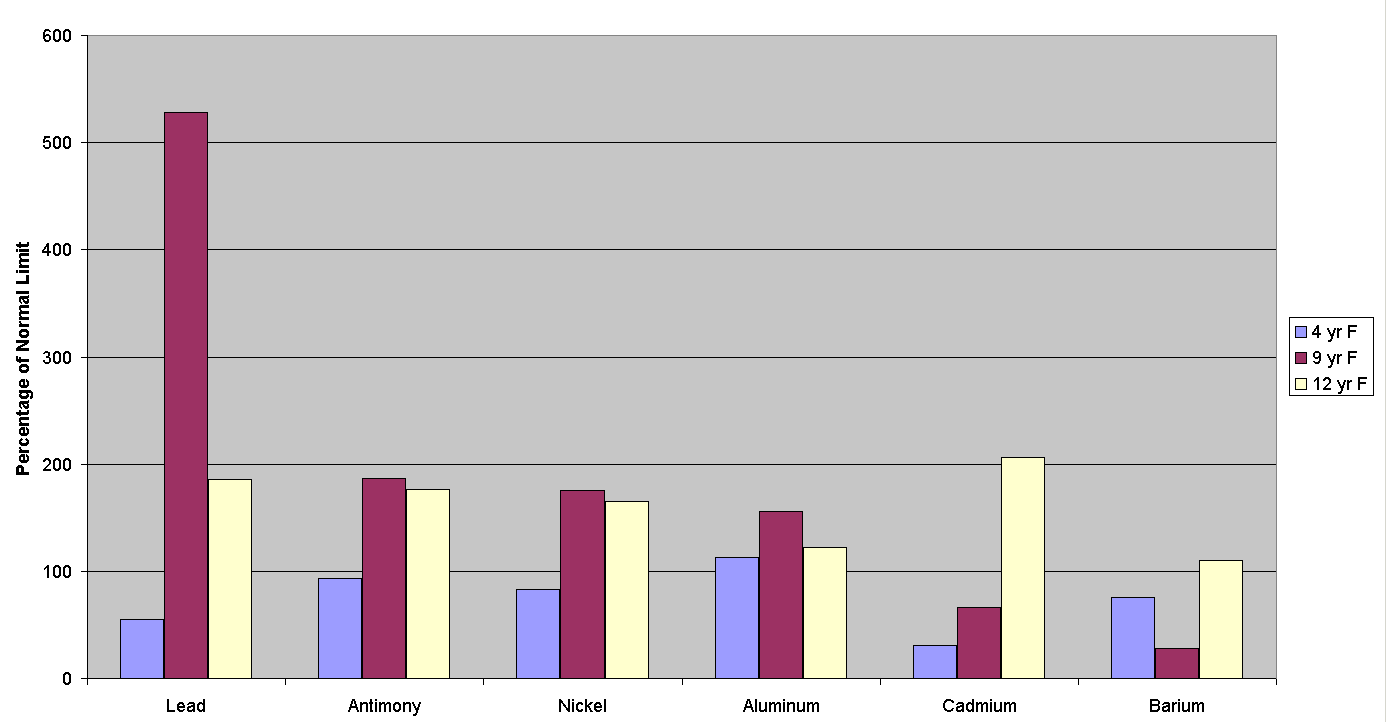
The 100% line represents the top of the normal range for each of these elements; for example, the 12 year old has twice the normal level of Cadmium.
Level of Elements in Children Near the Harrisburg Incinerator
(as a percentage of normal)
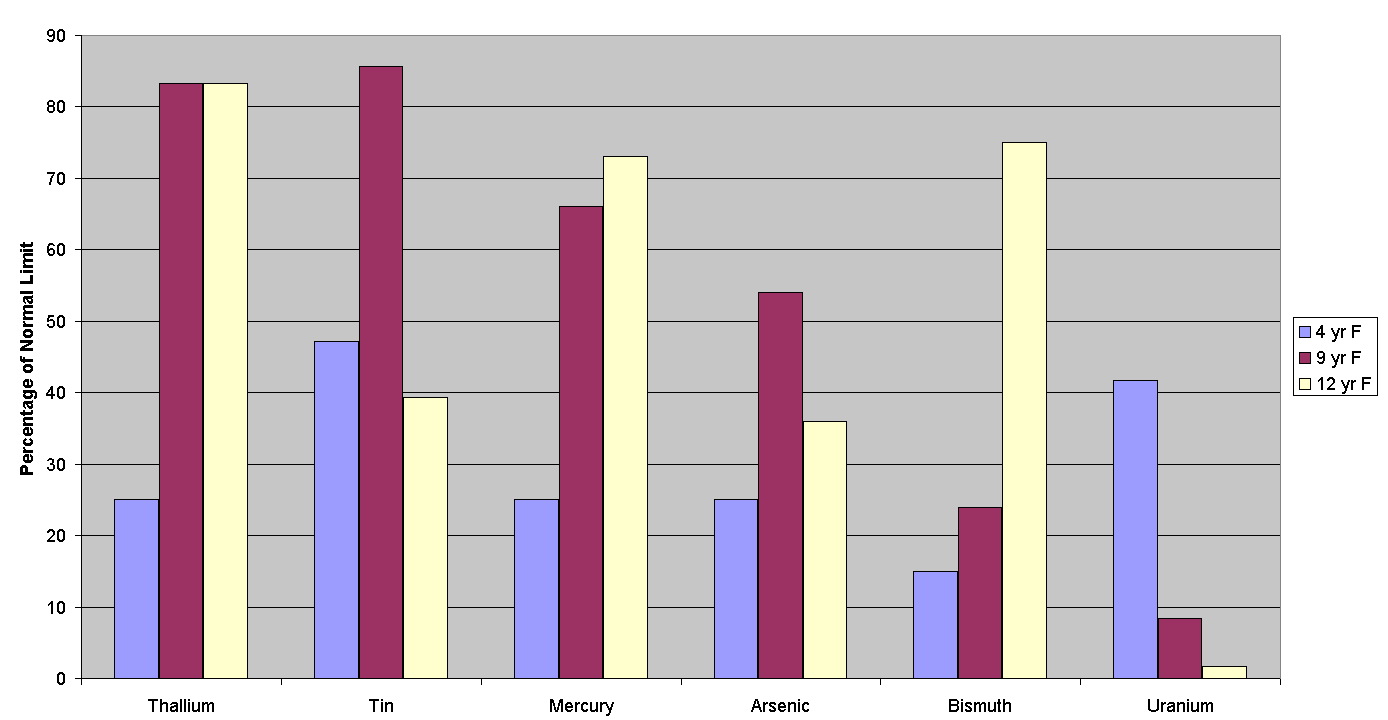
The 100% line represents the top of the normal range for each of these elements; for example, the 9 year old has high levels of tin, but still within the normal range.
Demographic Profile of Area Around Harrisburg Incinerator:
80% Minority within 0.5 mile radius of incinerator.
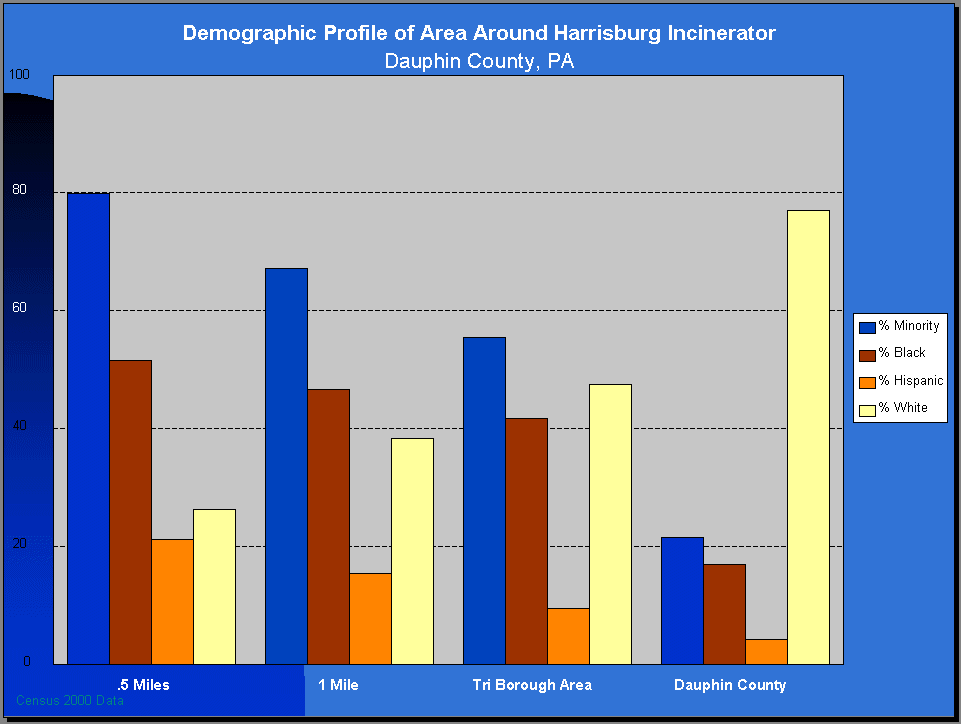
Demographic map of % minority population near the incinerator.
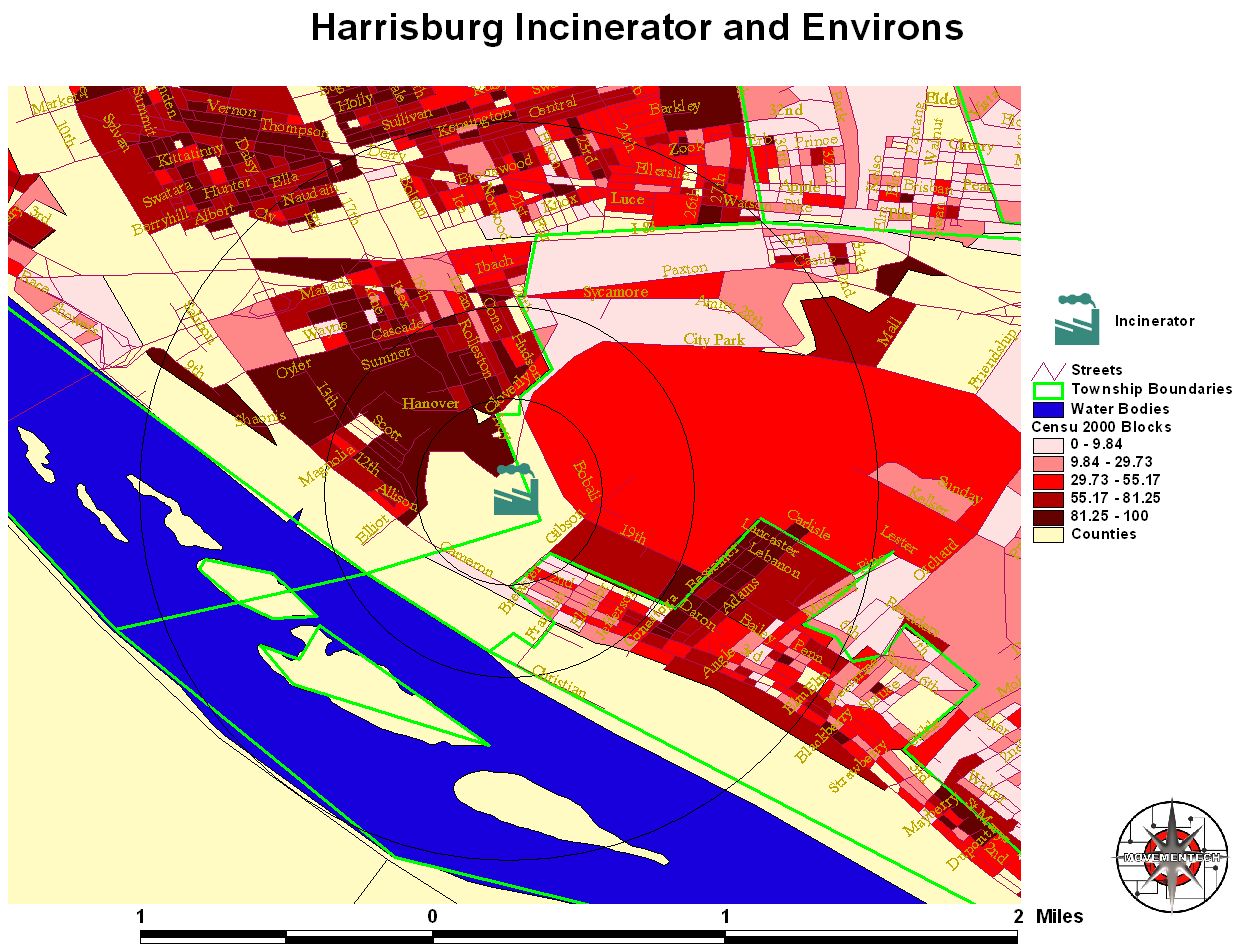
Operating Municipal Solid Waste Incinerators since 1949
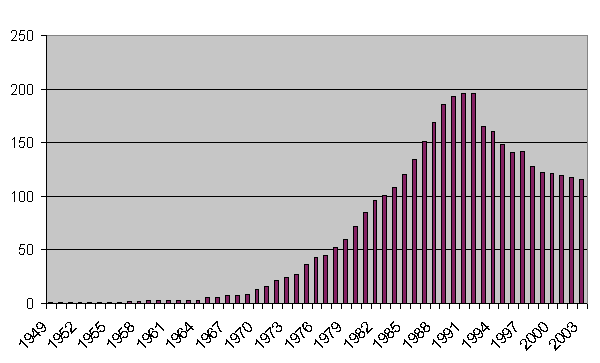
Far more incinerators have been closed than have been opened in the past 10 years
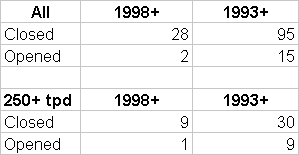
Organizations Opposed to Municipal Solid Waste Incineration
National Organizations
Alliance for Safe Alternatives, American Lung Association, Center for Health Environment & Justice, Center for Resource Solutions, Clean Water Action, Critical Mass Energy Project, Energy Justice Network, Environmental Health Network, Environmental Research Foundation, Friends of the Earth, Global Alliance for Incinerator Alternatives- U.S., Good Neighbor Project, Grassroots Recycling Network, Green Party of the United States, Green-e, Greenpeace USA, Health Care Without Harm, Indigenous Environmental Network, Institute for Agriculture and Trade Policy, Institute for Local Self-Reliance, Natural Resource Defense Council, Public Citizen, Sierra Club, Science and Environmental Health Network, Student Environmental Action Coalition, Union of Concerned Scientists, U.S. Public Interest Research Groups, Work on Waste USA
State-wide Pennsylvania Organizations
Citizens for Pennsylvania's Future, Clean Air Council, Clean Water Action of Pennsylvania, PennEnvironment, Pennsylvania Environmental Network, Pennsylvania Public Interest Research Group, Sierra Club of Pennsylvania
Alternative Waste Management Systems
A Positive Alternative to Incineration
- Pay-As-You-Throw trash fees
- Compost
- Materials Recovery Facility
- Community Reuse and Repair Center
Other communities have done it
| Select Community Waste Reduction Record-Setters |
| Community | Population | Residential Waste Reduction Level |
| Ann Arbor, MI | 112,000 | 52% |
| Bellevue, WA | 103,700 | 60% |
| Bergen Co., NJ | 825,400 | 54% |
| Chatham, NJ | 8,300 | 65% |
| Clifton, NJ | 75,000 | 56% |
| Crockett, TX | 8,300 | 52% |
| Dover, NH | 26,100 | 52% |
| Falls Church, VA | 10,000 | 65% |
| Fitchburg, WI | 17,300 | 50% |
| Leverett, MA | 1,900 | 53% |
| Loveland, CO | 44,300 | 56% |
| Madison, WI | 200,900 | 50% |
| Portland, OR | 503,000 | 50% |
| Ramsey Co., MN | 496,100 | 47% |
| San Jose, CA | 873,300 | 43% |
| Seattle, WA | 534,700 | 44% |
| Visalia, CA | 91,300 | 50% |
| Worcester, MA | 169,800 | 54% |
Source: http://www.epa.gov/epaoswer/non-hw/reduce/r99013.pdf
Pay-As-You-Throw
- People pay per bag of trash
- Gives incentive to reduce waste
- Can save residents money
- Key element of successful waste reduction programs
- Local examples include:
- East Hanover Twp
- Lower Paxton Twp
- South Hanover Twp
- West Hanover Twp
Wet/Dry Collection System
- Easier for people to participate
- Requires less household sorting
- Residents separate waste into 3 categories
- Wet side: food, yard, food-contaminated paper
- Dry side: paper, bottles, cans, plastics
- Trash
- Wet side is composted
- Dry side is sorted at Recycling Center
- Trash is landfilled
Composting
- Trees, brush, leaves, grass, clean wood are collected
- These are processed into mulch and soil for sale
- Can divert 30-40% of the waste stream
Materials Recovery Facility (MRF)
- Separates and processes recyclables
- Sells recyclables to industries
- Requires basic recycling equipment such as balers, conveyers, crushers and grinders
Community Reuse and Repair Center
- Accepts unwanted goods and makes them available to community members at low cost
- Broken items (bikes, bookshelves, etc) can be repaired by community volunteers and sold
- Builds community
- Saves people money
- Reduces waste
One person's trash is another's treasure
Money Matters
- Estimates for a comprehensive waste reduction/recycling program are around $20-30 million -- far less than $125 million for a new incinerator
- Less trash = less spent on disposal
- Income from the sale of recyclables can offset program costs
- State grants are available for recycling
Cost-Effectiveness of Recycling Programs

Creating Wealth vs. Creating Debt
- Incineration can reduce waste tonnage by 70%
- Waste reduction, recycling and composting can reduce waste by nearly as much and...
- Cost less
- Require less financial risk
- Benefit the environment
- Produce more jobs
- Build community







